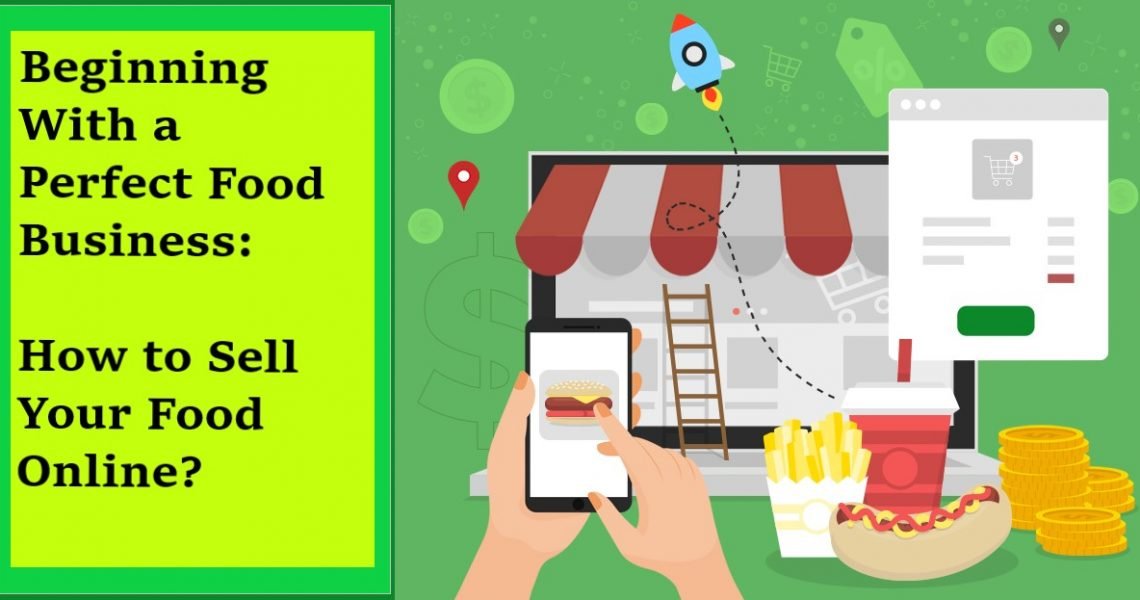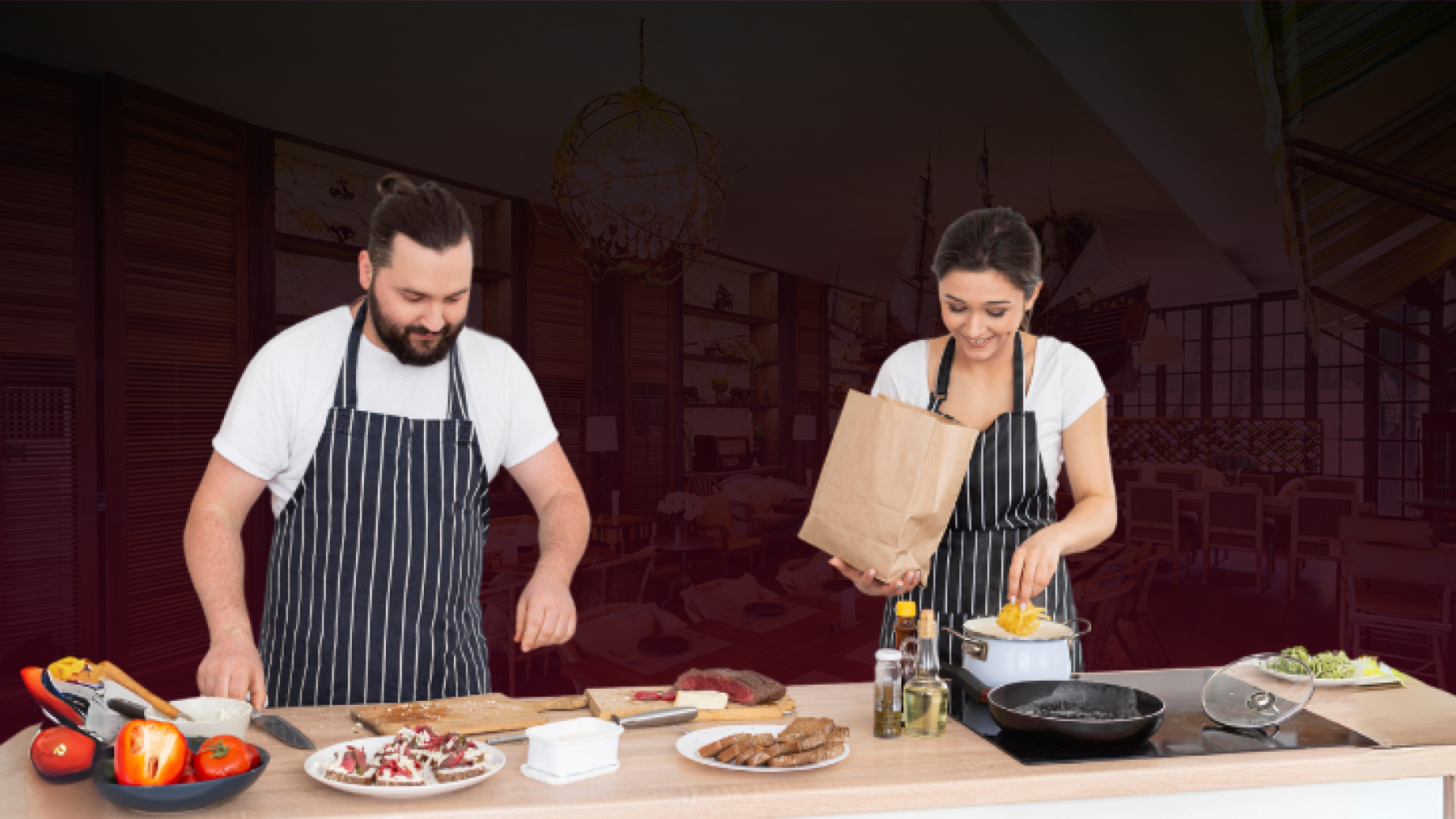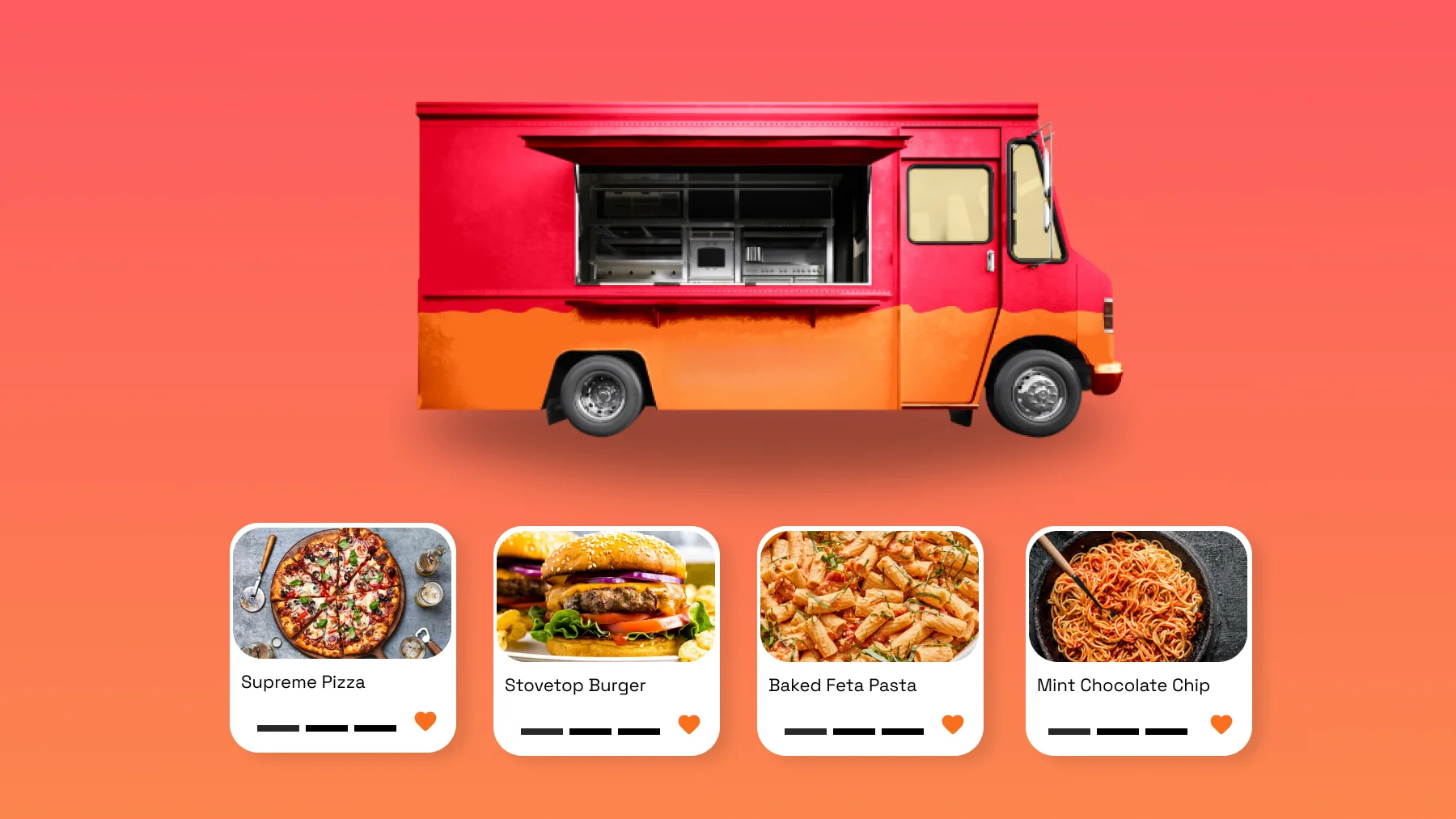Beginning With a Perfect Food Business: How to Sell Your Food Online?
The food business took a massive hit when the Covid-19 enraged in its full-flow, rocking across the globe. However, the food and restaurant business trend went off track and turned a full tilt upon to change over their business model: Selling food online. Yes! Selling food online by creating a perfect restaurant website gained immense popularity, after the enforced communal lockdowns. Many restaurateurs rolled up their sleeves and tackled the great challenge that defines their future business.
With the huge influx in the business plan model, the food industry had seen a massive 605% percent growth in profit after the march of Covid-19. Mrs. Kumar’s, an online restaurant specializing in Indian Culinary, with a website powered under Restaurantify, set a great business model in Monroe, New Jersey. Mrs. Kumar's raked in excellent revenue from their online food store.
Mrs. Kumar's tale isn't an isolated incident, though. Hundreds of commercial chefs, restaurants and eateries are now offering their cuisine online. Such is the power of online food selling, that none discerned such a drastic turn-around. The whooping growth rate shows no signs of slowing down fast forward two years from now.
This brief guide is for you if you're currently a restaurant business owner and would like to broaden your business strategy to include delivering home food, or if you're unsure how and when to start a restaurant. From identifying your targeted audience to creating your brand to handling shipping services, you'll learn it all.
Here are some superb steps to start a perfect food business.
1. Make a Blueprint of Your Business Model
You must wear many hats while delivering food online. You'll need not just cooking talent to prepare beautiful dishes, but also commercial acumen to manage your firm successfully. Here are some of the most precious aspects to consider while writing your restaurant marketing strategy.
i) Build Excellent Menu Options:
Most likely, you already have a business concept germinating in your mind. The best culinary enterprises are often born out of your own goals and dreams, such as when you discover a breakthrough dessert cookie or a unique barbecue sauce concoction while experimenting in the kitchen. If you have a feeling that one of your inventions will be a blockbuster, trust your instincts and start it well and compactly. Before attempting to increase your menu too soon, concentrate on improving that one thing (or that type of dish).
If you're not sure about your concept, you can do some of your own market analysis to see how people respond to it. To test food concepts, engage your family and friends as focus groups, or start setting up small pop-up stores to try out new things.
ii) Determine Who Your Target Audience Are:
After you've identified what you're looking for, you'll need to figure out who you're looking for. Consider your intended audience in as much detail as possible, including statistics, lifestyles, and hobbies and interests. While determining a very specific subset of customers can be difficult (after all, who doesn't like food? ), the more clear and explicit you can be, the better your service, communication, and advertising will be.
Let's take another look at Mrs. Kumar's. Fans of Indian cuisine have a large target market, which is crowded with competitors. As a result, Mrs. Kumar's has focused on a particular segment of that market: customers who adore Indian cuisine with unique and authentic flavors
We can see how they appeal to this demographic through their product (Indian Masala Magic, Indian food made with a generous portion of love) and marketing (with expressions like No MSG | No artificial flavors | Fresh and Healthy | Fair Pricing).
iii) Prepare a Budget and Secure Funding:
Once you begin to produce food on a huge scale, you need to take the time to understand the overall cost of starting a food business or whether you will have to safeguard extra funds. Think about the cost of starting your business (such as any preliminary investments and stockpiles) as well as extended costs when developing your budget (like labor charge, rent for the place, and utility charges)
A financial plan also teaches you how to properly value your products. Any product's price is determined by its expenses associated, which include the distributor price and labor costs.
These expenses will decide your revenue and profit, and you want to make absolutely sure you get the proper profit to develop without losing customers. To put it another way, if you set your selling pricing too cheap, you risk having a lower profit. If your prices are too expensive, you may lose out on revenue.
You'll be able to evaluate if you need to get more finance if you comprehend your expenditure and predict your gross margin. If you do require extra finances, you have the following options:
- Applying out a business loan.
- Getting in touch with relatives and friends.
- Acquiring external investment or enlisting the help of a partner.
- Taking use of crowdsourcing.
- Requesting federal assistance.
2. Create a Brand and Define It
One thing that all successful businesses have in general is a consistently strong brand recognition. As your company expands, your brand lives, breathes, and develops, helping to increase customer recognition, commitment, and connection. Here are three ideas for getting started with your brand.
i) Select a Proper Name for Your Business:
The name of your company is the cornerstone of your firm's image, as well as your chance to create a positive first impression on potential customers. A distinctive, easy-to-understand business name can significantly aid brand exposure and marketing initiatives, whereas the incorrect name might generate customer confusion or even legal and business issues.
The following are some effective strategies for selecting your brand names:
- Make it basic but comprehensive.
- Pick a name that will flourish with your company.
- Eliminate names that are difficult to spell.
- Check to see whether the name is available.
- Check the US Patent and Trademark Office's government database to determine whether the domain is available, then Google to see whether any other businesses use the same (or identical) name.
ii) Create Elements for Your Brand:
Although your company is an important aspect of your brand, it also includes your logo, colors, typeface, and just about everything else. Increasing brand recognition builds customer loyalty, which encourages individuals to purchase.
After you've decided on a business name, the next essential step is creating a logo that will serve as your brand's icon. When you have a logo, the remainder of your branding efforts—color scheme, layout, and font—will click into place effortlessly. You can either employ a designer or use a logo creator to complete this stage.
iii) Give a Thought to the Packaging:
Ensure your packaging contains your logo, colors, and fonts from a marketing standpoint. From purchasing food on your site to delivering it at their doorstep, the idea is for consumers to have a good branding impression.
Your packaging also should fulfill its primary goal, which is to keep your food fresh and ready to eat, from a logistical and a strategic standpoint. If you're offering and distributing made-to-order dishes, your packaging must keep the food hot and appealing until the consumer receives it. If you're transporting food to consumers hundreds of kilometers away, be sure your package keeps things safe and fresh.
iv) Labeling:
Labeling is another major factor to consider: food companies are responsible for building labels that comply with federal food labeling regulations. For most processed goods, appropriate labeling is needed, particularly nutritional information and labeling for the main food allergies.
3. You Are Defined by Your Website
Your website serves as your virtual store while selling your food online or from your home. As a consequence, having a defined, clear digital platform can highly delight your customers and ultimately boost revenue which is very essential for your business. When you are planning to create a website, you need to use the services of the trusted names in the market like Restaurantify, just to make your virtual store as tantalizing and flavorful like your hot menu.
When it comes to creating a website, there are four recommended practices to follow.
i) Select a Domain Name:
Once you've decided on a name for your food business, make sure your customized domain matches it as precisely as possible so people can discover you. Please remember that a domain will cost you at least between $10 and $15 every year. Your domain name is normally purchased through the eCommerce platform that you will use to create your online business.
ii) Use Website Templates to Get Started Quickly:
Establishing an online business from the starting point necessitates not only a substantial investment in construction and technical skills, but also the motivation to create the perfect website. Use an unique restaurant and food website template that integrates all of the latest web technologies, such as standard features, video backdrops, and numerous photo galleries, to make the entire process smoother.
iii) Make Product Photography a Priority:
Users will not be able to see, taste, or touch the food before ordering it if it is sold online. This emphasizes the importance of product photography: your mission is to bring your gourmet goods to existence on display so that customers are comfortable in making a purchase.
Mrs. Kumar's has made a significant investment in high-quality lifestyle photos of all of their exquisite takeaway dishes. Each picture is elegantly arranged, emphasizes the major components, and encourages people to purchase the dishes.
iv) Include Design Aspects That Will Increase Sales:
While excellent product photography may certainly enhance sales, there are a variety of lead generation strategies you can implement in your web business to drive purchases even further.
- Including explicit call-to-actions.
- Taking use of whitespace.
- Mobile-friendly design.
- Consumer testimonials are highlighted.
- Developing an easy-to-navigate framework.
- Providing an easy payment options.
4. Make Food Production More Efficient
Once you begin selling food from your house, double-check that you have all of the appropriate permits, machinery, and materials to satisfy customer needs.
i) Obtain the Necessary Licenses and Permissions:
Because of the inherent hazards of working with products that people ingest, all companies require different types of licensing to function. However, the food sector has extremely stringent rules for food security. The sorts of licenses and permits you'll need are determined by the type of food you'll be serving and your location.
The following are examples of licenses and permits:
- A local or state-issued business license that allows you to conduct business.
- A food handler's license.
- To be able to obtain ingredients at cost price, you'll need a resale license.
- A food license allows you to make and sell food from your own residence.
ii) Have the Right Set of Equipment at Your Disposal:
You can't establish a food company without the appropriate equipment for mass production. This implies you should treat your professional kitchen as if it were a restaurant: So, what do you need to acquire to run it as effectively as possible? What steps can you take to make your cooking more successful? Here are some things to think about buying:
- Stove Grills Fryer Refrigerator.
- Machine that makes ice.
- Refrigerator with a door.
- Cooking pans and sautéed pans.
- Sheets for baking.
- Tongs, knives, cutleries, and ladles are examples of kitchen implements.
Ingredients to Look for:
To buy appropriately, you need to comprehend your supply chain and operations needs, much like a restaurant. This will very certainly be a case of observation and experimentation to acquire enough materials to match consumer demand while avoiding any food spoilage.
Search for suppliers who deal closely with local farmers or create direct relationships with vendors, based on what you're offering.
5. Develop a Marketing Plan
You wouldn't have the advantage of enticing prospective customers who chance to pass by, as you would with a physical shop. Rather, you must make a concerted effort to advertise your online food company.
i) Make an Investment in Social Media:
One of the most effective methods to communicate effectively with your current and future clients is through social media. Test with natural social media initiatives, such as publishing images of your menu options on Instagram or using Twitter or Instagram Reels to provide behind-the-scenes films of your cooking procedure.
You may also pay for Instagram or Facebook advertisements, which will allow you to identify your target consumer and promote your items at a reasonable cost-per-click.
ii) Invest in Search Engine Optimization:
Every day, Google analyzes around 3.5 billion queries. Spend on SEO to increase your traffic to the website so that these prospective customers may find you. You can do the following:
- Create one-of-a-kind alt titles and descriptions.
- Make your website responsive to mobile devices.
- Please provide a sitemap.
- Fill out your Google My Business profile and identify your business.
- Become a member with as many business directories as you can.
6. Make Arrangements for Shipping and Delivery
You've built your brand, outlined your company plan, and constructed your website. Orders are starting to come in now. How can you ensure that your food is delivered to customers in an effective and secure manner? You may allow order pickup, deliver things locally, or ship products nationwide or worldwide, based on what you're offering.
i) Allow Customers to Pick Up Their Orders and Have Them Delivered Locally:
Do you run your food company like a restaurant, with take-out and made-to-order foods? If that's the case, your shipment approach should prioritize curbside pickup and offer local delivery services.
ii) Establish Your Shipping Policies:
It's critical to have clearly marked eCommerce shipping requirements if you're offering processed food products like sweets, preserved meat, spicy sauces, or sweets. This helps you to simplify processes and reply to customer inquiries more quickly. Here are some questions to ponder:
- Will you levy a shipping fee? If so, how much will it cost?
- What countries will you be shipping to? Will you just ship inside the continental U.S., or would you also ship internationally?
- How soon will the things be delivered (Next-day delivery, a priority mail or a one-day delivery)?
- Which providers are you going to use?
Food shipping presents unique complications, particularly when transferring items beyond the nation or over state boundaries. Make sure you're aware of any potential limitations in the states or countries where you'll be travelling.
Conclusion
If you are planning to start a business, these are the main factors that you must bear in your mind. These hacks will stand in good stead for your online food business to go successfully. All you need to do is to broaden your business strategy and be consistent.
LATEST BLOG POST
What Is Happy Hour? 10 Foolproof Ways to Make Your Happy Hour Successful
ShareTweetSharePin0 Shares
What does a hostess do at a restaurant? Duties And Responsibilities
ShareTweetSharePin0 Shares
200 + Cafe Name Ideas That Will Make Your Business Stand Out
ShareTweetSharePin0 Shares
How to Craft an Effective Restaurant Mission Statement: A Step-by-Step Guide
ShareTweetSharePin11 Shares
How to Create Food Truck Business Plan? Complete Guide
ShareTweetSharePin11 Shares
How to Choose the Right Restaurant Name (+ 190 Great Ideas & Examples)
ShareTweetSharePin11 Shares








